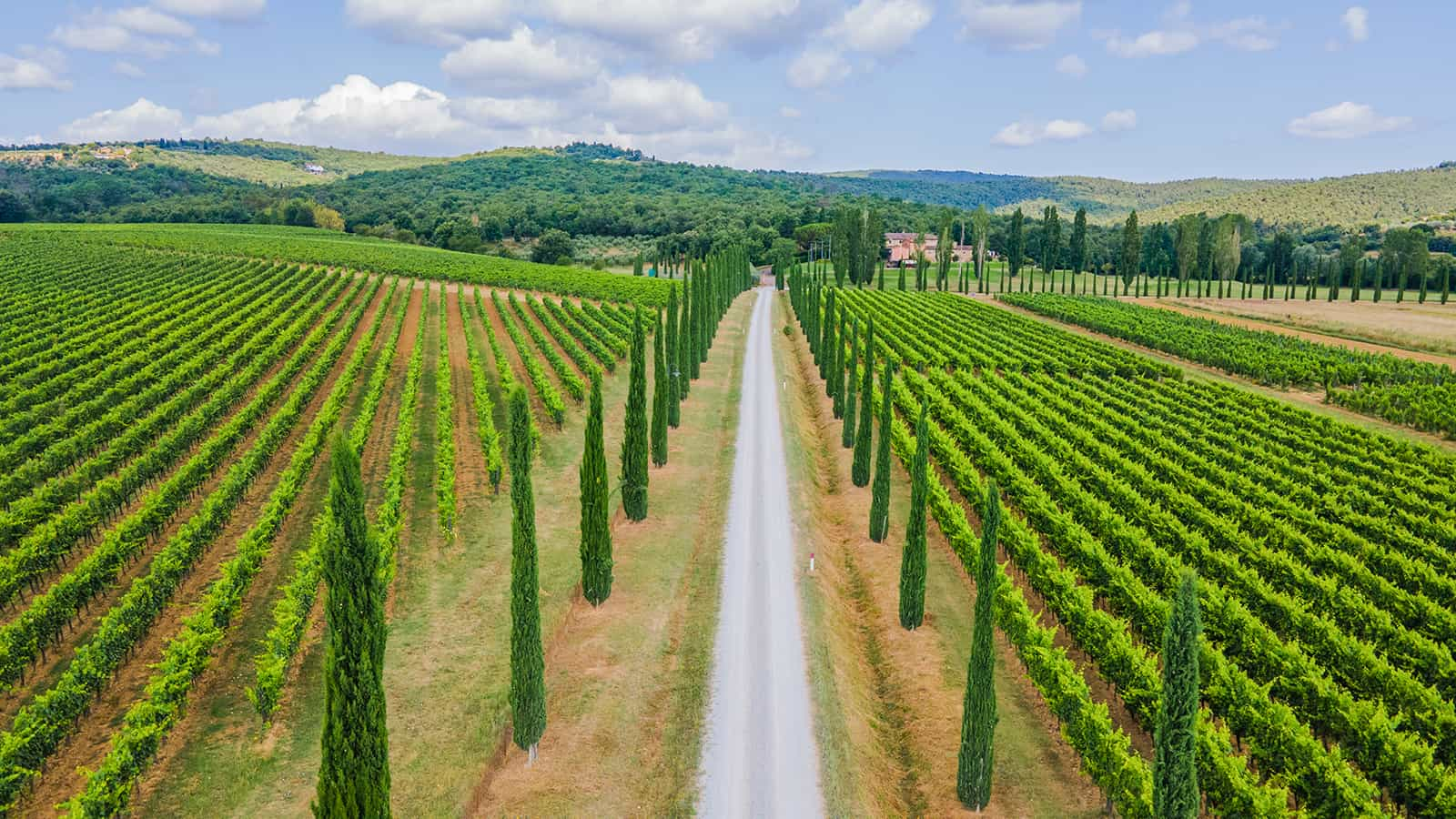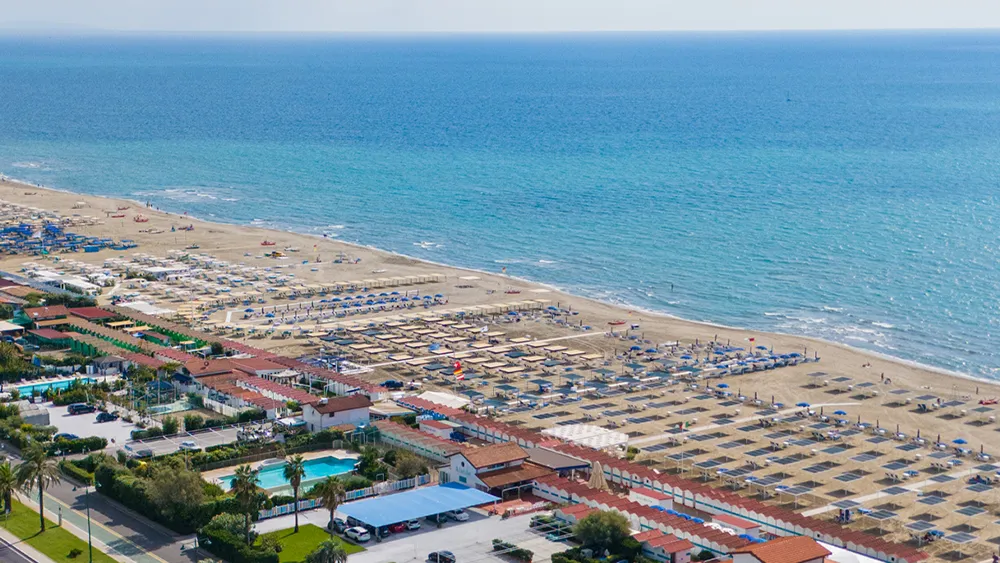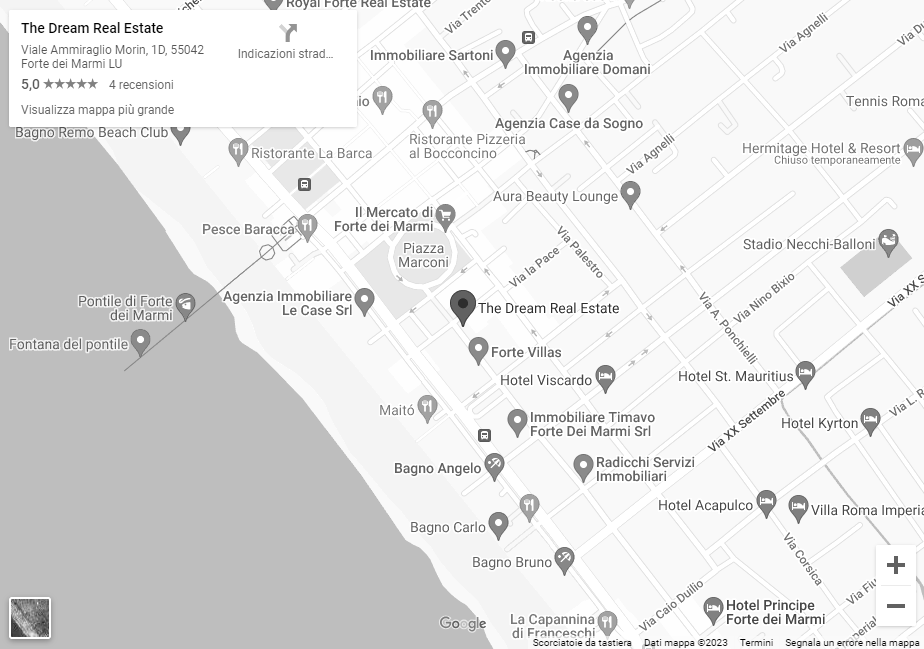History
The Tuscan hinterland is an area that bears the indelible traces of a millennia-old history, witnessing the passages of ancient civilizations and the transformations that have sculpted this region into a crossroads of cultures and powers.
The Etruscans were the first to plough these lands, an enigmatic people who dominated this land before the rise of Rome. The Etruscans left behind archaeological evidence, such as the cyclopean walls of Volterra or the excavations at Populonia and Chiusi.
With the advent of the Romans, the Tuscan hinterland became part of the Roman Empire, with cities such as Fiesole, Volterra, and Arezzo becoming centers of strategic and cultural importance. Roman roads, theaters and military architecture marked Rome’s passage through this region.
However, it was during the Middle Ages that it began to take shape as a distinctive political and cultural entity. The medieval city-states of Florence, Siena, Lucca and Pisa fought for political and economic dominance, resulting in a competition that stimulated an unprecedented artistic and cultural effervescence. The cathedrals, fascinating squares and works of art that still enrich these cities today bear the signature of the ingenuity and passion of their inhabitants.
With the Renaissance, Tuscany experienced a period of grandiose splendor. Republics are transformed into duchies and granduchies, with the Medici family emerging as patrons of the arts and humanistic thought. Florence becomes the heart of the Renaissance, with figures such as Leonardo da Vinci, Michelangelo, and Botticelli furrowing the cultural horizon. The cities and towns were enriched with sumptuous palaces, Renaissance gardens, and great works of art that still leave people speechless today.
Landscape
The Tuscan hinterland represents a unique, world-famous area where the hills rise in a breathtaking landscape that enchants the soul and captures the heart of anyone who crosses it. This corner of Tuscany, far from the crowds and immersed in quiet, offers an authentic and fulfilling experience that encapsulates the beauty of its hilly lands and the essence of rural life.
The various hilly areas of the Tuscan hinterland, such as the Val d’Orcia, the Crete Senesi and the Florentine Hills, are all characterized by their unique beauty. The gentle curves of the hills join the horizon with the sky and create plays of light and color to be experienced in every season.
Scenic roads wind through cultivated fields, vineyards, olive groves and forests, creating a variety of environments to be discovered.
The old stone farmhouses, with their cozy inner courtyards and vine- and rose-covered facades, tell stories of agricultural traditions that have been passed down for generations. Vineyards stretch as far as the eye can see, yielding the renowned Tuscan wines that win palates around the world.
Villages to explore
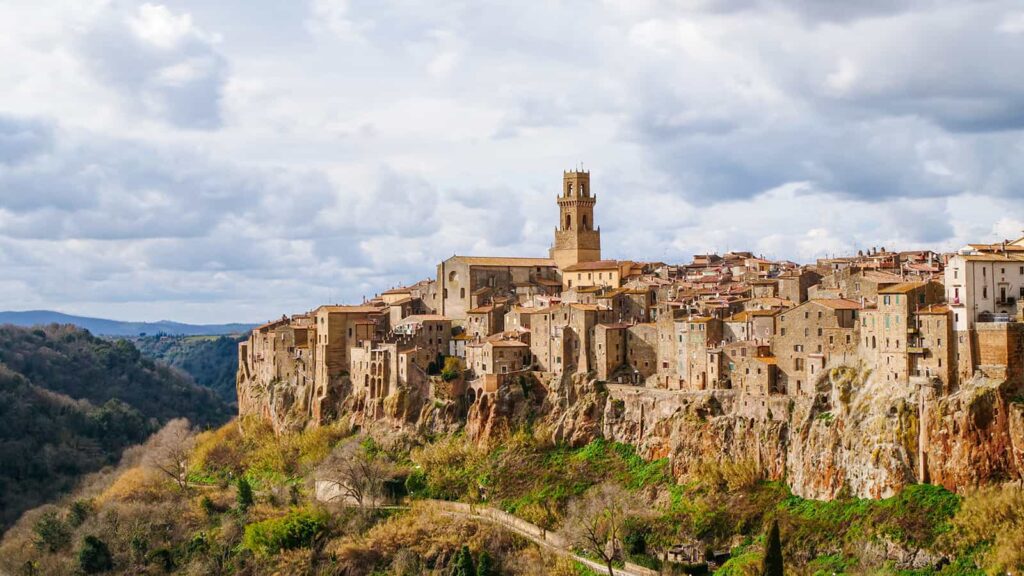
The Tuscan hinterland is a place steeped in thousands of years of history, where every hillside tells stories of ancient civilizations, conquests and changes that have shaped the region over the centuries. This territory is rich in villages and hamlets that are authentic treasure troves of history, culture, art and traditions. Ancient medieval settlements such as San Gimignano, Volterra, Montepulciano and Pienza are true historical gems that capture the imagination with their medieval towers, Romanesque churches and Renaissance palaces.
San Gimignano, with its imposing towers, bears witness to the rivalry between noble families during the Middle Ages. Volterra, an Etruscan city dating back millennia, preserves unique archaeological treasures and an atmosphere steeped in mystery. Montepulciano and Pienza, on the other hand, represent jewels of the Renaissance, with their charming squares and elegant architecture capturing the artistic essence of the era.
Each inland Tuscan village encapsulates its own identity and eventful past. The cobblestone streets, cozy squares and hidden alleys reveal an authentic beauty and a deep connection to historical roots. Here, art and craftsmanship mingle, creating a cultural mosaic that is reflected in local markets, art stores and traditions that are still alive today.
Tastes

Tuscany is world famous for its hills, cypress-lined avenues of which the most famous is perhaps that of Bolgheri, and great cuisine. Tuscan flavors can be as bold and intense as they are delicate and fragrant when needed. From homemade pastas to Tuscan cheeses and cured meats, through forest fruits, mushrooms and truffles, to desserts and the stars: wine and oil.
Tuscan olive oil is considered one of the best in the world, a true culinary delicacy that reflects the climate and the artisanal care with which it is produced. The Tuscan hills are dotted with centuries-old olive groves, where majestic trees produce olives that will yield an intensely flavored and nuanced oil. Tuscan extra-virgin olive oil, with its fruity aroma and slightly peppery flavor, is the perfect companion for traditional dishes such as bruschetta, ribollita and Florentine steak. The tradition of growing and harvesting olives is a ritual that has been passed down for generations, combining past and present in a golden liquid found on tables around the world.
The Tuscan hills are also renowned for their extraordinary wines, which tell the story and passion of local winemakers. From full-bodied reds to fragrant whites, Tuscan wines are an explosion of flavors and aromas. Vineyards stretching across the hillsides of Tuscany, kissed by the sun and caressed by the wind, produce grapes of exceptional quality. Vines such as Sangiovese, Tuscany’s signature grape, give rise to wines such as Chianti Classico and Brunello di Montalcino, world-renowned for their complexity and character. Tuscan wineries are places of winemaking excellence, where tours and tastings allow visitors to immerse themselves in the culture and art of wine production.
Activities
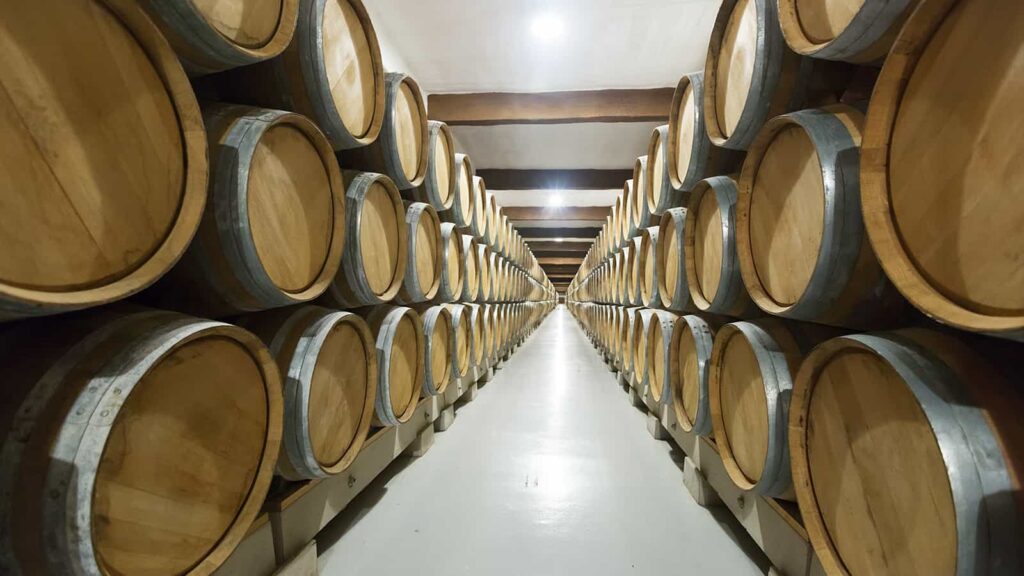
In the Tuscan hills, there are countless activities to enjoy. Adventure lovers can explore nature trails and bike paths, discovering secret corners of this earthly paradise. Walking among the local flora and fauna, breathing in the fresh air and admiring breathtaking views, is an experience that allows you to connect with nature in a unique way.
Visits to wineries provide an unparalleled opportunity to immerse oneself in the world of wine. Each winery tells a unique story, from growing grapes to creating high quality wines. Guided tastings allow you to discover the secrets of different grape varieties, appreciating the aromas and flavors that characterize each bottle. It is a sensory journey that embraces the region’s winemaking tradition and allows visitors to appreciate the art of winemaking. But the experiences do not stop there: you can learn traditional Tuscan cuisine, famous for its simplicity and authentic flavors, through lessons organized at the various agritourisms scattered among the hills.
For those who love nature and equestrian art, horseback riding among the hills is an ideal choice. Discovering the landscape from a different point of view, riding a noble steed, adds a magical dimension to the exploration.
And what could be better than a picnic among the vineyards to complete this experience? Sipping a glass of Tuscan wine, tasting local products and enjoying a meal outdoors surrounded by the beauty of the hills is a moment of pure pleasure. The tranquility and unique atmosphere make this moment unforgettable.


